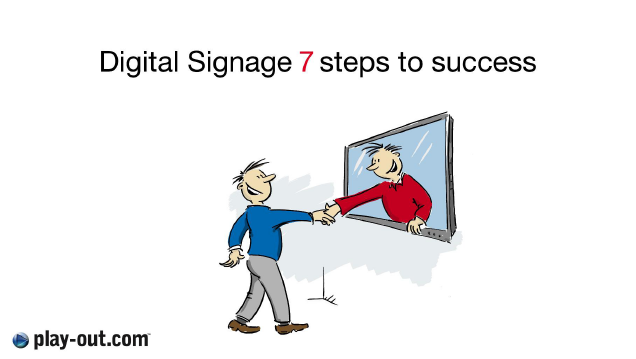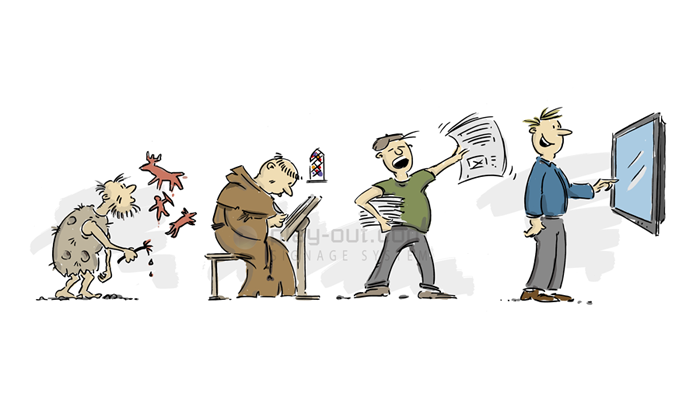
Introduction
Digital information systems, so-called digital signage systems, are considered by many to be something new and revolutionary. Let us de-dramatise
it all a little by establishing that communication is something that Man has dealt with for a long time.
What is new is the visual technology behind the communicating. This new technology offers some new possibilities while at the same time quite a few “old truths” must still be taken into consideration.
A digital information system consists of several parts. Technology and content must together constitute a platform for communication to different target groups.
The creation of a digital information system is a process in several steps; before the goal is reached, the following steps should have been taken.

Need analysis
The purpose of all communication is to put out a message. A question you should ask yourself is whether you need an information system. If yes, for what? At whom will the message be aimed? Internal or external information or both? Is the message to be shown locally or globally or, here too, both?
How are media to be distributed? How are dynamic media (web) to be shown and distributed? How are media such as video and still images to be handled?
Who is to be responsible for operations and content, respectively? Who is to be in the project group and what is the budget?
When these questions have been posed and answered, you can take the next step, step 2, and form your project group.
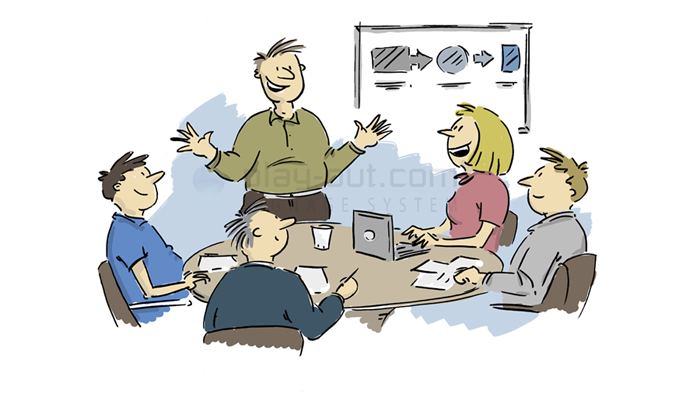
Create a project group
The project has now started. Appoint a project group with relevant members. Since an information system consists of both technology and communication, you should include people from both IT and marketing/information departments in your project group. You should also be open to including external competence in both technological Integration and communication from the start.
A project manager is also needed, perhaps yourself. Also remember that after the completion of the project there will be an everyday routine with the information system. It might be a good idea then to have decided who is to continue driving it all. Perhaps not you. It is good from the start to identify this person, a person who is able to handle and coordinate matters of both IT and communication. This person should of course be included your project group..

Time plan and goals
An information system is a big project that takes time. It is important to the result that it is allowed to take time.
Make up a time plan, be prepared to revise but set a goal for commissioning. Two time plans are needed, one for IT (the technology) and one for marketing/information (the content). These run in parallel towards the common completion date. The time plan must contain clear goals and partial goals. View the project as a construction project where it is important to build in a well thought out way and from the foundation up. Good foundation work ensures future possibilities of development. Make sure to dimension the time to be used for installation, commissioning and any subsequent checking correctly as completion date approaches. Do not rush commissioning –the technology needs to be fine tuned.
Remember that the information system will have a long life, so let the process take the time needed.

Content and production
The need analysis provides you with information on what is to be communicated. It is extremely important to the functioning of an information system that as much work is done with the content as with the purely technological solution. It is thus important to appoint a person responsible for the production of content.
The design of a communication solution can if necessary be delegated to an external consultant if there is no capacity for this internally. In certain cases, it may in part be a question of chiefly making visible the information available, for example in a company’s intranet or its public website. In other cases, it is a matter of publishing completely new information. No matter which, a web platform is likely useful in your information system. Your webmaster could become the system’s “InfoMaster” and work with tools with which he or she is well familiar.

IT and display technology
In the same way as in step 4, the need analysis provides you with information on the need for IT and display technology. Just as in the case of content, a person responsible for technology and IT must be appointed. If the internal IT department is unable to handle the technological solution in a comprehensive way, get external help.
It is however important that your own IT department is deeply involved in this project as the traffic will run in the network of which they have been made responsible. In this way, many problems and conflicts can be avoided. Sketch the system’s infrastructure, the number of display areas, Internet/intranet access, capacity of the FTP server. Remote administration of the displays, necessary security levels etc.
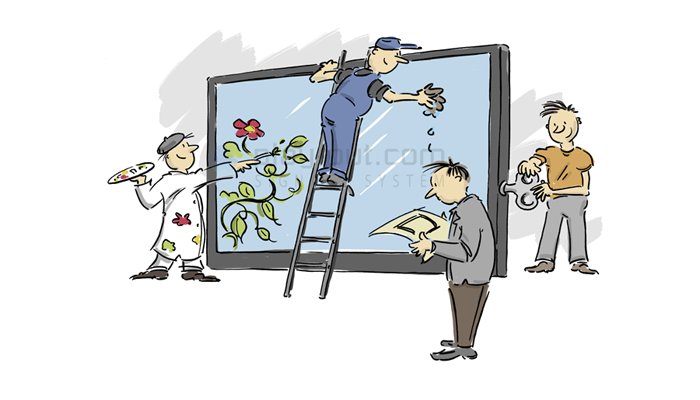
Life after installation –daily life with
the information system
So now your information system is installed and commissioned. Some fine tuning is no doubt needed also after commissioning and approval of the installation. An information system is after all a living tool -it can grow and change with your needs.
It is important to be clear on the following, some of which we have mentioned previously, when the “daily grind” comes around
- Who is in continued charge of the information system project
- Who produces and updates content
- Who maintains the technical part of the system (IT)
- Who performs any service needed on display technology
- Who is responsible for the continued training of the system’s users.

Choice of supplier
An information system is a fantastic tool for both internal and external communication. Producing a solution suited to the activities and needs you have and may have in the future is, as described in the steps above, an extensive process. It is all the more important to choose a supplier who can take comprehensive responsibility for the solution delivered.
Play-Out can offer the following:
- Play-Out software for the management, distribution and reproduction of your media
- Our own media PC configured for optimal function
- Our own global presence and local collaborating partners with the highest competence in AV integration and media production
Play-Out is more than just a supplier –we are a complete collaborating partner in information systems.
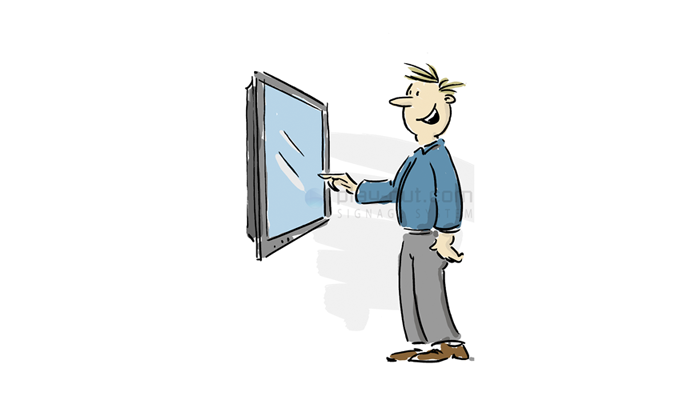
Checklist
- Need analysis
- Create a project group
- Time plan and goals
- Content and production
- IT and display technology
- Life after installation –daily life with the information system
- Choice of supplier

